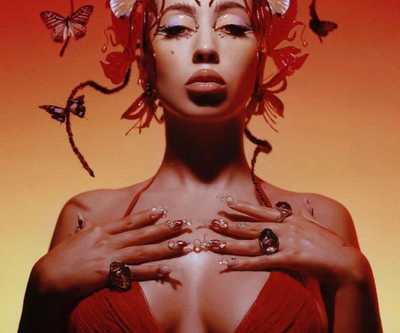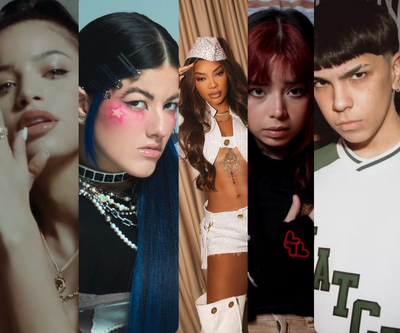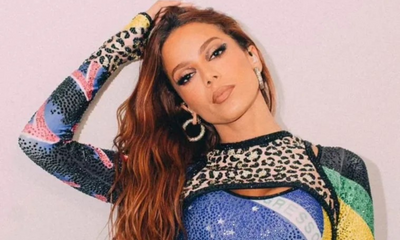The premiere of the Barbie movie is just around the corner. The film starring Margot Robbie, America Ferrera and Ryan Gosling is one of the most anticipated films of 2023, both by fans of the iconic Barbie doll and by film enthusiasts who follow the film’s director and co-writer Greta Gerwig’s work. Barbie’s live-action movie has sparked great interest since the announcement of its production in 2019. Many have tried to guess how far Gerwig will take her vision away from the stereotypes linked with the doll which was created in 1959.
The inclusion of Issa Rae, Alexandra Shipp, Kate McKinnon and Hari Nef as different versions of the famous doll in Barbie (2023) may foretaste Mattel pivoting from the concept of “ideal of beauty” that for several decades Mattel struggled to reverse and sometimes with little success.
And in this context, we at BoldLatina reflect What has Barbie's relationship and representation with Latinas throughout these decades been? Since the launch of the Dolls of the World Barbie collection in the 1980s, the company has proven its eagerness to show some representation even if it was a hit or miss. In this collection, several Latin American Barbie dolls were included. Let’s go through some of them.
Peruvian Barbie doll
This is the first Latina Barbie in the Dolls of the Word Barbie collection. Distributed in 1986, this vintage Barbie doll wears a traditional Peruvian attire, with two skirts to protect her from the cold and a shawl that covers her shoulders. According to the doll’s description, the flowers on her hat symbolize that she is in search of a husband; which is true for some traditional Peruvian attires, such as those of the Huancavelica region.
There are two subsequent Peruvian Barbies: one launched in 1999, whose most noticable feature is the baby in her arms, and another included in the 2001 Princess Collection. The Princess of The Incas is based on the most extensive and complex civilization developed in South America: the Inca Empire was the largest in pre-Columbian America and its heart was in the city of Cusco, the “historical capital” of Peru.
Puerto Rican Barbie
The doll was introduced in 1997 in a white folkloric suit with ruffles. This Hispanic Barbie has almond-shaped eyes, thick lips and long, wavy, brown hair.
According to a 1997 article in The New York Times, the reception of the doll was mixed. “But while Puerto Rican Barbie doll has been received enthusiastically in Puerto Rico, it has caused a heated debate among Puerto Ricans on the U.S. mainland. Many of the latter find her objectionable, from her light skin to her colonial-style tiered dress,” the author wrote.
The Puerto Rican doll’s critics also pointed out the condescending tone of the message on the back of the packaging: “What was written on the package was very condescending: 'The U.S. Government lets us govern ourselves.' If you're going to represent a culture, do it properly. Be politically honest,” were the words of interviewee Gina Rosario for the New York Times article when the doll came out in the late nineties.
Mexican Barbie dolls
The first Mexican Barbie doll is from 1989. With this vintage Barbie doll, Mattel sought to show Spanish influence by putting on a composite dress consisting of an orange skirt with white lace and a white blouse decorated with artisan flowers.
The second edition was released in 1996 with a dress that commemorated the colors of the Mexican flag: red, white and green. The doll has thick dark braids with traditional ribbon woven in the braids.
Later, the company released the Mexico Barbie in 2012 as part of the Dolls of the World Barbie collection.
Mattel's intention was to dress the dolls in traditional clothes and show elements typical of each country. But good intentions are not always enough. This Mexican Barbie doll has black, wavy hair, and wears a bright pink folklórico-like dress with ruffles, lace, and colorful ribbons. In addition, it comes with a passport and a Chihuahua dog, which generated controversy as explained in an article in Today.com titled “Is 'Mexico Barbie' a stereotype or stylish?” there were other Barbies in that collection such as the China Barbie that came with a panda pet. In Mattel’s defense, the company stated that all Barbies from "Dolls of the World" have their passport document as a symbol of international travel and globalization.
On the other hand, Monica Olivera who was interviewed in the same Today.com article, who runs the Mommy Maestra blog, reflected.
“When I was a little girl, I would have loved to have owned a Barbie that actually looked like me and that wore a traditional costume I saw every year at the September 16th or Cinco de Mayo events we celebrated. Why make our kids continue to feel ashamed? Boo,” said Olivera in the interview.
Following the controversy, Mexico Barbie returned in 2014 without a passport. But this time, Mexican Barbie was dressed in a mariachi suit, including, of course, the impressive wide-brimmed hat of these musicians.
Día de Muertos Barbie
This is one of the Barbies from the line Festivals of The World created to honor festivities and culturally important days, such as Oktoberfest (Germany), Lunar New Year (China) or Diwali (India).
Initially launched in 2019, it honors one of Mexico’s oldest traditions, that celebrates the memory and never forgetting loved ones who have died. The doll wears a black embroidered dress with ruffles, adorned with butterflies and hearts. Additionally, her face is painted with the mask of “La Catrina” (the iconic Mexican skull) and she wears a crown with butterflies and marigolds on her head true to Dia De Los Muertos customs.
Like the previous Mexican Barbies, this one received different criticisms that marked it as an example of “cultural appropriation”, according to The New York Post.
Another one of the festivities picked by Mattel is Cinco de Mayo. This 2006 Barbie captures the joyous spirit of the holiday with a white, red and green outfit.
And just as Peru had its Inca princess, Mexico has the Princess of Ancient Mexico Barbie. It was distributed in 2004 to commemorate one of the most relevant political units in pre-Columbian America. She wears brightly colored cotton clothes with feather ornaments.
Brazilian Barbie
Brazil has four Barbie dolls; two of them are related to the Carnaval, one of Brazil's most important events that brings together millions of visitors each year. The first Brazilian Barbie was launched in 1990, and the second—with a more modern and suggestive look—in 2005. Both reflect the joy, dance, and music that we can see at Rio de Janeiro's Sambadrome.
A few years later, the 2009 Amazonia Barbie was inspired by the natives from the largest rainforest on the planet, which covers much of Brazil and extends through Venezuela, Colombia, Peru and Bolivia, among others. This eyebrow-raising doll features tribal tattoos on light skin with European facial features, long necklaces and feathers on her dark hair.
And in 2012, a new Brazil Barbie came out wearing a more typical white dress. As for accessories, it has a dish of cocadas which is a very popular recipe in the South American country and a passport, like the Mexico Barbie.
More South American Barbies: Argentinian Barbie and Chilean Barbie
Other dolls that also had the controversial passport were the 2011 Argentina Barbie, ready to tango with a charmeuse dress, and the 2012 Chile Barbie, whose clothes evoke the huasos otherwise known as Chilean cowboys. In addition, the Argentina Barbie has a small jaguar, a native Argentinian animal —although a rare choice of a pet while the Chile Barbie has a Chilean fox terrier.
Famous Latinas as Barbies
Jennifer Lopez, Frida Kahlo, Celia Cruz and Gloria Estefan are some of the Latin figures highlighted by Mattel in recent years.
In the case of the Jennifer Lopez or JLo Barbie, the 2013 doll featured two versions. One she was dressed in a long gala dress gown she wore in real life designed by designer Zuhair Murad and the second one called the Jennifer Lopez World Tour Barbie has a sheer, shiny, sleeveless jumpsuit inspired by her Dance Again tour.
Mexican artist, activist and feminist Frida Kahlo was honored with her own Frida Kahlo Barbie in the 2018 Inspiring Women Series doll collection. Her distinctive braided hairstyle is shown, but her prominent eyebrows were not captured, which infuriated her relatives, according to an article in Vanity Fair.
As for Cuban singers Celia Cruz and Gloria Estefan, both, are part of the Hispanic Heritage Month Barbie tribute line. The Celia Cruz Barbie was released in 2021, and the Gloria Estefan Barbie came out in 2022.
This year the company’s initiative to be a source of greater representation and promote female empowerment expanded when they chose the first Mexican-born to travel to space, Katya Echazarreta, and immortalized her in the Barbie collection on Women's History Month.
Also, Mattel has recently partnered with designers like Sophie Lopez, with the purpose of showing Latinas in a more modern, bold and unique way. Will it be enough to break down some stereotypes? We will soon see if the film Barbie gives the new messaging justice. One of the Barbie teasers said it best: “If you love Barbie, this movie is for you. If you hate Barbie, this movie is for you.” Barbie is set to be released in U.S. theaters on July 21, 2023.






